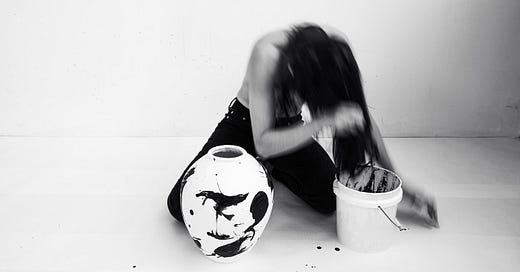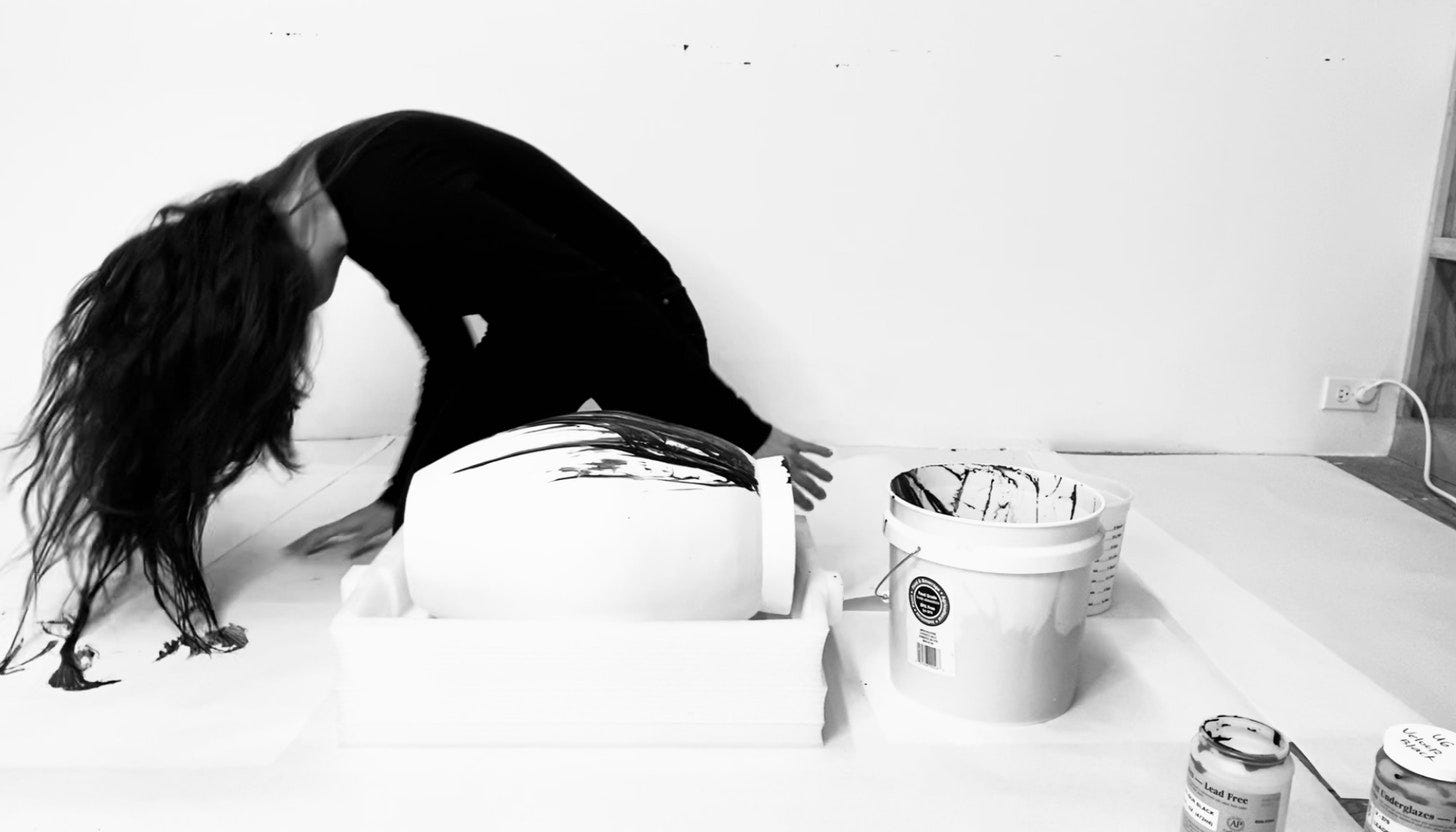Last summer when most people were jubilant about the “end” of Covid and joyfully making plans with friends, I was doing the opposite. I was disinviting all the people I had previously invited out to stay with us in East Hampton.
We had just bought a historic house in Springs with two acres of gardens and an incredible studio for me to make art in. But my external environment did not match my internal world. On the outside, I was living in a garden paradise with a wonderful husband, surrounded by flowers, dogs, and rabbits bouncing by. On the inside, I felt trapped in a swirl of pain. I was plagued by chronic migraines that shrank my world. I spent most of the early summer trying to manage the pain - in bed with an ice pack on my head, going to acupuncture, meditating, sleeping, always carrying snacks - I tried to control every variable in my life that could lead to a headache. They got more frequent. At a certain point, I had 20 migraines a month.
The hardest part was not the pain itself, but the fear of the pain. I never knew when the next one would hit, and I didn’t know what caused them. I felt existentially unsafe. One clue I did have was that intense emotions like anger or sadness immediately triggered a headache. I told this to a neurologist. I was hoping she was going to say I had some kind of brain tumor that was easily operable and once removed the headaches would stop for good. (The only logical explanation, of course.) Instead, she diagnosed me with depression. I sat in the car after the appointment and cried. Up until this point, I had suspected I was depressed, but I hadn’t allowed myself to say it out loud. Hearing someone else say it, I felt both relieved and adrift.
In his book, “Waking the Tiger,” Peter Levine talks about how animals in the wild are constantly threatened and face death, but they don’t walk around traumatized or depressed. They are naturally in tune with their bodies and this makes them “virtually immune from traumatic symptoms.” My clue about emotion and physical pain was the beginning of a string and pulling on that string revealed answers that would be transformative for me and my art.
I’m a believer that the process of transformation begins with death. In my case, what was dying was not my body, but an old version of myself that was stuck in the past. That version of me, the role I had played most of my life - the responsible firstborn daughter, over-achieving, ambitious, collected, independent, a people pleaser - was hanging on by the skin of her teeth and making clear she was going to kill me before allowing me to kill her. The old me was incongruent with the true me, the artist. The conflict between the two felt like a vise tightening around my temples.
What I see when I look at the series of work I made last summer, is a woman throwing open the doors of her subconscious and saying “Fuck it! You can come out now!” to all of the previously unacceptable rage, grief, shame, desire, and deep wells of love and tenderness I had locked away in a dark cellar and was too afraid to visit.
I look at this work and I see myself letting go and getting free.
The process was physical, mental, emotional, and spiritual.
I let myself do things I had never done before.
I walked around my studio naked.
I took a ceramic piece I made and I threw it across the room on purpose, just to see how it would feel to break it. (It felt delicious.)
I took vocal lessons and belted more loudly than I ever knew I was capable of. I let myself be loud.
I put a trampoline in my studio and tried to bounce the sadness away. (It helped.)
I dunked my head in a bucket of underglaze and used my hair as a brush. (The result of that is the entire moon jar series and the photo you see above.)
I learned to ride horses and galloped toward jumps.
I took a road trip by myself.
I did five ketamine sessions hooked up to an IV. (It was transformative and I have a lot more to say about it in another post.)
I microdosed psilocybin.
I read several books including “The Artist’s Way,” “Adult Children of Emotionally Immature Parents,” “Healing Back Pain: The Mind-Body Connection,” “Loving What Is,” and “Waking the Tiger.”
I listened to every song Brandi Carlile ever recorded on repeat. (Spotify told me I was “in the top 0.005% of Brand Carlile listeners of 2021.”)
I took an antidepressant. (It wasn’t for me.)
I went to therapy.
I confronted my sexual identity.
I admitted I was angry about the past and decided to let go of that anger.
After all of this, I discovered three truly precious things:
A truer, freer version of myself
My voice as an artist.
How to listen to my body.
The intuitive wisdom of the human body, how our bodies are impacted by emotions locked in our subconscious mind, and spiritual experiences accessed through the physical body all inspire my art today. They’re deeply personal and the more I discover, the more I want to know.
This year, I’m living and making art from a lighter place. I’ve gotten to know myself better and it turns out that I’m not who I thought I was. Who am I exactly? I don’t know. What I do know is that my physical pain is mostly gone now and when it does appear, I’ve learned to tune into my emotions and let myself feel them. This prevents 90% of headaches. I’ve learned how to take care of myself. And I know for certain that Louise Bourgeois was right when she said that “art is a guarantee of sanity.”
Nicole
—
You can see my most recent work here and here.
My work will be shown at The Leiber Collection Sculpture Garden this May and I will be having a solo show in East Hampton in October. More info and invites to both coming in future emails.
Email me at nc@nicolecorbett.studio or follow me on Instagram.








